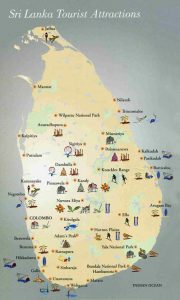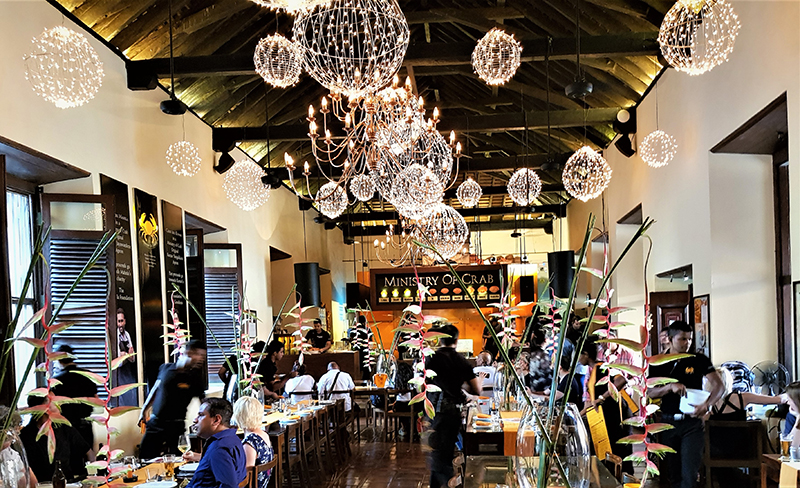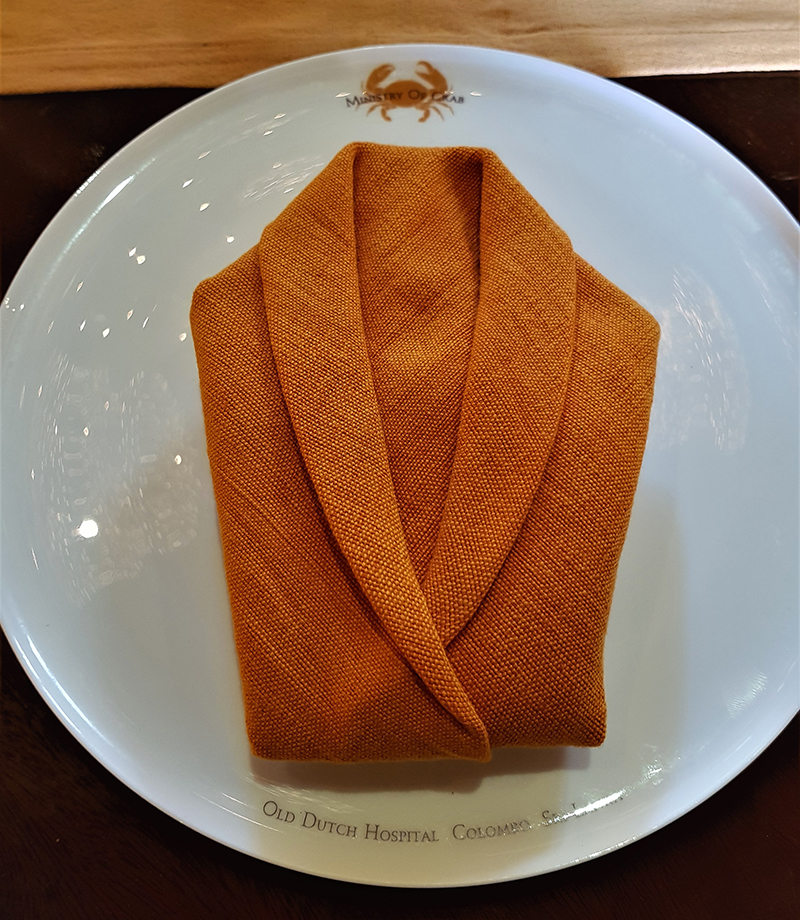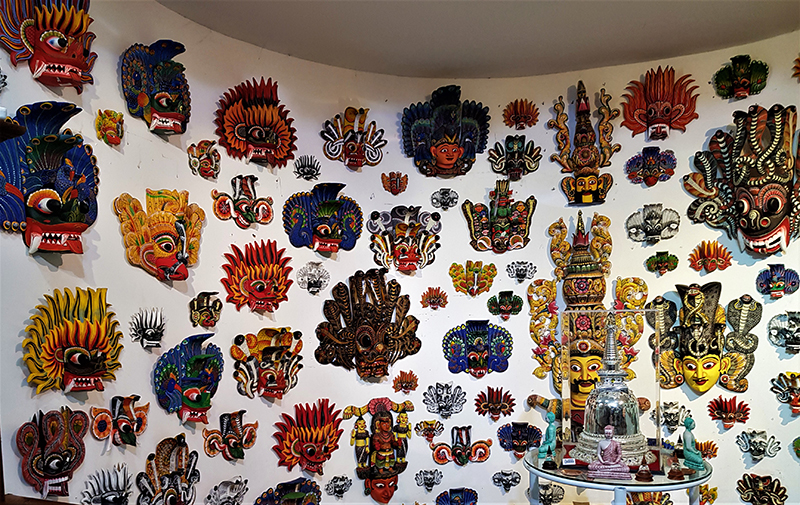Sri Lanka …. Once again!

About 900 years ago, the Venetian traveler Marco Polo, wrote thus about his visit to Sri Lanka in his classic work, ‘Divestment dou Monde’ (Description of the World): “On leaving the island of Andaman and sailing for 1,000 miles a little south of west, you come to the island of Seilan, which is undoubtedly the finest island of its size in all the world.”
The medieval chronicler of the Orient, Marco Polo, was dead right in his declaration, as anyone who visits this magical island will also concur. Although young Marco was on a dark and evil mission when he had set sail for Seilan. Kublai Khan, the Emperor of China in whose service Marco was then, had sent him on an expedition to seize the tooth of Buddha, one of Buddhism’s most holy relics, dating back to 543 BC. Fortunately for history, Marco Polo failed in this mission and this holiest Buddhist treasure remains to this day in the Temple of the Tooth in the city of Kandy, to be viewed by millions of devotees, pilgrims and tourists each year.
It is virtually impossible not to fall madly in love with Sri Lanka. My last visit to this paradise on earth was a little over 5 years ago, and Sri Lanka had deeply impressed me then (as it had on an even earlier visit some 15 years ago), and it impressed me more now. For in the intervening 5 years or so, the country has progressed even further, and largely without the usual negatives of ‘development’ becoming tangibly apparent, like increased air pollution (think New Delhi and Beijing), or insane traffic (think Bangkok or Mumbai), or collapsing public utilities like water, electricity or litter collection (think Karachi), or, perhaps the scariest social ill of rapid urbanization – omnipresent crime and an ineffective law enforcement system.
Sri Lanka’s relatively rapid regeneration since the end of the long civil war has largely kept development’s ill effects strictly under control. Take Colombo for example. Sri Lanka’s largest city (but not the official state capital mind you, which is Sri Jayawardenepura Kotte) and one I can totally adopt as home for the rest of my life! As you drive around Colombo, especially in the Fort Area, there is so very much that is candy for the eye and soothing for the spirit. Spotless, totally litter-free avenues lined with magnificent old trees with widely spread shady branches, with immaculately maintained heritage buildings from the Dutch, Portuguese and British periods set back in landscaped grounds every few hundred yards. Abundant green spaces and public parks provide opportunities to seek tranquility and leisure for all.
The almost total absence of billboards and advertising signs, except on shop fronts, has saved Colombo from the ugly scarring given to so many of our own cities by the choking abundance of the in-your-face, crass advertising signs. To the extent that one is shocked and bewildered, not to say even quite dismayed, on seeing advertising neon-boards even placed on the boundary walls of military establishments in Karachi. You cannot but help wonder if our armed forces are so short on funds that they need the revenues the advertising boards provide to make ends meet, or have the forces just succumbed to the avarice of capitalism, seeing no impropriety in selling their dignity in this way, in a matter of speaking?
Colombo offers a huge variety of dining opportunities, offering really delicious food at quite reasonable rates. Seafood restaurants are present in strength, but of course we had to go to the mother of them all – the by now legendary Ministry of Crab. I was last there when it had been open for less than a year and now almost 6 years later, I found that it had improved even more, in ambience, in service standard and of course in the quality and taste of the food itself. I had the King Prawn Bisque to start with, and a medium (up to 800 grams) Garlic Chilli Crab. Both were excellent.

Ministry of Crab interior

Napkin – Ministry of Crab
Then one evening we dined at The Lagoon seafood restaurant at the Cinnamon Grand Hotel and that too was excellent. Mind you, both places are extremely popular and advance reservation is an absolute must to get a table. Then there are seafood restaurants too in other hotels, as well as on the seafront. Other restaurants not specializing in seafood that I would recommend include Nuga Gamma, Gallery Café, Kaema Sutra and Raja Bojun.

The Lagoon seafood restaurant at Cinnamon Grand hotel
Colombo also offers a wide variety of shopping options, especially if you want to purchase local artifacts and handicrafts, bric a brac, handloom fabric and garments, wood carvings and of course jewelry and gems, with Sri Lanka being famous for emeralds and sapphires since ancient times. You can of course wander around in the many new malls that have come up, but I found some of the standalone shops to be much more interesting and welcoming. Barefoot is one shop that is almost a must to visit. Laksala is a large government-owned shop with a huge variety of handicrafts. Kreation is good for handloom cloth and garments. Odel is a large modern store with several international designer outlets, as well as sections with local goods. Premadasas Gems & Jewels is great for the variety of handicrafts it offers, besides gems and jewels as its name states, but it is on the expensive side. Then of course you must browse around the Old Dutch Hospital shopping precinct.

The most convenient and cost effective way to move around Colombo is by auto-rickshaws, which unlike their counterparts in other South Asian countries, run by the meter and not on rates to be haggled for each trip. And a further pleasant, even impressive fact is that most of the rickshaw drivers speak fairly acceptable English, a great convenience and even a relief for tourists from all over the world. Sri Lanka has achieved wonders with educating its people, achieving over 98% literacy.
Three 3 days or so in Colombo are sufficient to go around the city, see the sights, visit the main temples and museums, do your shopping, gorge on good food, do a side trip to the Mt. Lavinia Beach, chill out and bird-watch on the banks of Lake Beira, AND if you are a gambler, test your skills and your luck at one of the casinos!
Then it is up to you where to go next and what to do; you are spoilt for choice and if you have the time you should really do it all! My Top 10 would be:
- Colombo – already described
- Pinnawela Elephant Orphanage – on the way from Colombo to Kandy and an inspiring project
- Kandy – second largest city, start of the hill country and deserving a couple of days
- Anuradpura, the ancient capital and a world heritage site
- Nuwara Eliya – higher up in the hill country, with its verdant tea gardens
- World’s End drop at Horton Plains National Park – beyond Nuwara Eliya
- Visit a waterfall or two – Bambarakanda Waterfall (near Kalupahana, or Diyaluma Falls, or waterfall in Knuckles Conservation Forest. And while in the area, do white-water rafting in Kitulgala
- Visit a national park to see a variety of wildlife – Yala National Park down south, or Wilpattu National Park, in the north-east of the Island
- At least one beach – Hikkaduwa Beach for snorkeling, scuba diving, Bentota Beach – water sports
- Galle – heritage, and just beyond, Dondra Point for whale watching
Best time for Sri Lanka? November to March. Avoid summer and the post-summer rainy reason. Bon voyage!

Leave a Reply